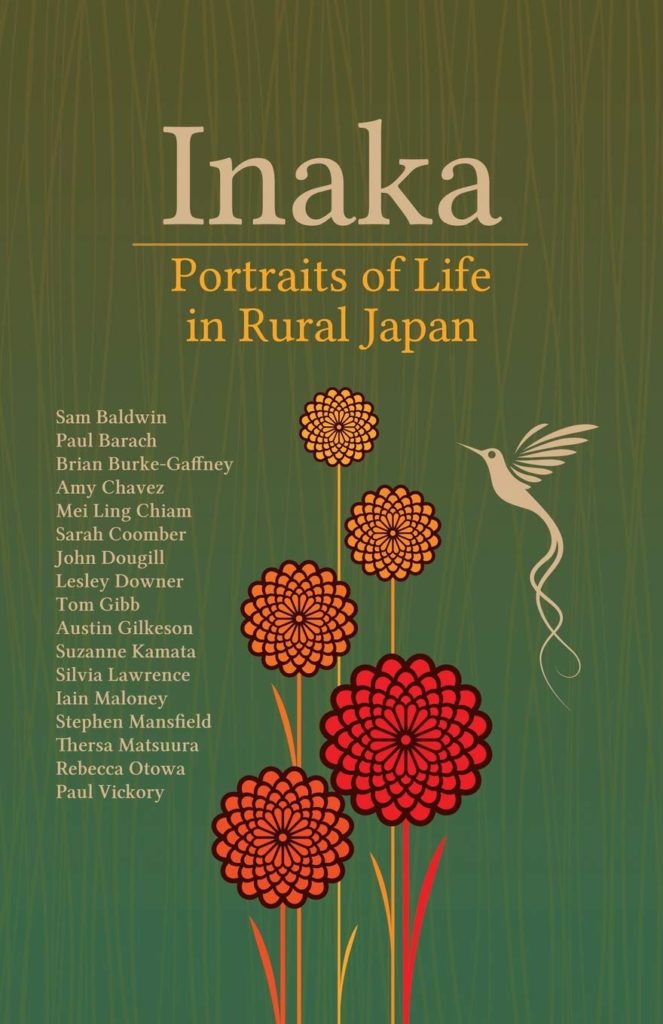Review by Renae Lucas-Hall
“It’s easy to fall under the spell of rural Japan” is the first sentence in the introduction to this anthology that sets the reader upon a path to enchantment. Each essay acts as a beguiling incantation that will amplify one’s desire to explore the Japanese countryside.
If you’re an avid reader of Japan-related literature you’ll recognize some prolific and well-known writers like Amy Chavez, Lesley Downer, and Stephen Mansfield. While newer, emerging writers like Paul Barach, Tom Gibb and Paul Vickory enthral with their humor and wit.
The first composition is by Silvia Lawrence and begins on the islands of Tanegashima and Yakushima southwest of Kyushu. Next, is an armchair trip to Okinawa and Tsushima islands before moving to Tokushima and Okayama prefectures. After several anecdotes in the surrounding areas of Nara and Kyoto the reader takes a north-eastern journey to Fukui and Gifu prefectures. This is followed by tales in Shizuoka and Ibaraki before ending up in Tohoku and finally on the northernmost of Japan’s four main islands: Hokkaido.
Stephen Mansfield tickles the senses with the sights, smells, and sounds of Okinawa. He exudes an appreciation of the awamori (Okinawan alcohol) jars and the shisa lion-dog figures, handcrafted and presented in the showroom of potter Paul Lorimer. Brian Burke-Gaffney’s determination is impressive as he struggles through his Buddhist monk training at the Busshin-ji Zen Temple in Shikoku.
Suzanne Kamata sent me on a flurry of Google searches on the creation of sukumo (natural indigo dye) in Tokushima and the farmers who produce this beautiful material.
Shucho-cho in Yamaguchi felt like the perfect retreat for Sarah Coomber who craved seclusion in Japan. The kindness of the locals and a connection with the koto (Japanese stringed musical instrument) were able to repair her soul and define her future in ways she’d never imagined.
Amy Chavez’s devotion to her island in Okayama Prefecture and her willingness to preserve its history is commendable. Her description of the fishermen on Shiraishi Island and their success catching octopuses and sardines gives an immersive impression of life on this Japanese island where culture and traditions are respected and maintained.
Rebecca Otowa is upfront and honest about the positive and negative aspects of rural life, running a country home, and the way in which inaka life is evolving. Iain Maloney comments on one’s “adventurous nomadic spirit” with the realisation that in the end, we all settle. Thersa Matsuura’s passage is an example of frustrating Japanese superstitions that can become misconceptions.
One can imagine drinking tea on a mountainside overlooking Mount Fuji with Mei Ling Chiam. Lesley Downer’s travels in Tohoku, retracing the footsteps of the great haiku poet Matsuo Bashō, are fascinating. Bashō’s haiku are sprinkled throughout her chapter giving it a lyrical nuance.
This book gives readers an intimate portrayal of rural Japanese life. The writers’ keen observations make it a collection that will educate, thrill, shock, spoil and delight.


